The Estonian A-team
A new dimension of container handling in the Baltic states reached the Estonian port of Muuga on a special ship that came from Hamburg. On board were two container gantry cranes from HHLA's Burchardkai terminal. As soon as they were pulled onto the quay and ready for use, they enabled container ships with a cargo volume of 14,000 standard containers (TEU) to be handled for the first time in Estonia. But before they actually lifted the first container off a large ship, an A-team from HHLA TK Estonia had to solve some unexpected problems.
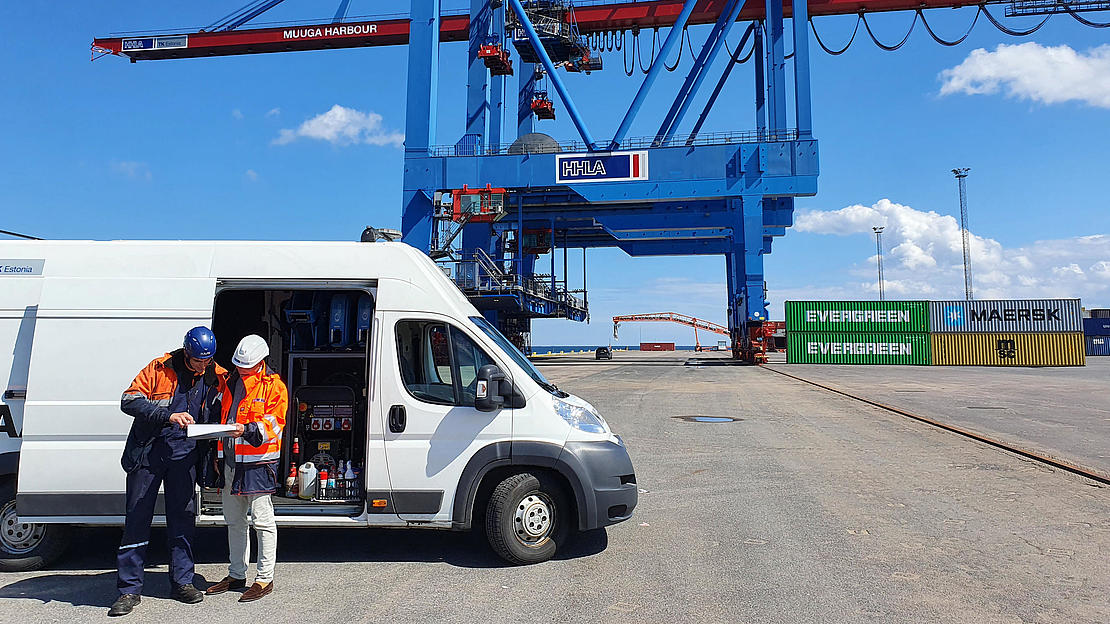
For Dmitri Bashkov and Tönis Segerkrantz, it all started with "a week full of headaches", as Bashkov, who calls himself an "electrician with a bit of software knowledge," sums it up. His boss Segerkrantz recalls, "When we tried to put the new container gantry cranes into operation, we got all kinds of error messages that we didn't understand.”
A special ship journey
They used to operate in the Port of Hamburg, and now they’re among the largest container gantry cranes in the Baltic. How did they get to Estonia? The video shows the transhipment and ship journey the 73-metre cranes took across the Baltic Sea.
The “new” gantry cranes were actually not new, but had already been in use in Hamburg for many years. Prior to the arrival of this larger equipment, manufactured by Kocks, HHLA TK Estonia had three smaller cranes from Konecranes in operation. Though the basic design was very similar, the software worked differently.
Unfortunately, almost nothing on the huge machines moved without computer control, and not even the lift started up. For a few days, Bashkov had to take an emergency ladder inside the gantry structure to climb up and reach the room-sized control centre at the top of the crane. After a week of headaches that included studying manuals and exchanging ideas with colleagues from Germany, the boom and trolley could finally be moved.
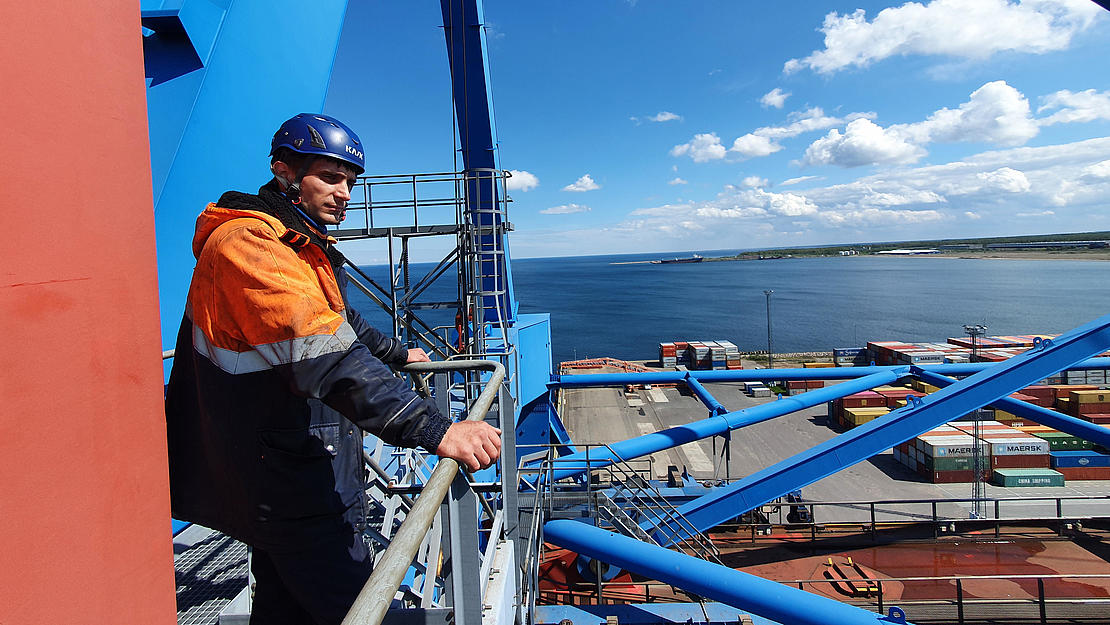
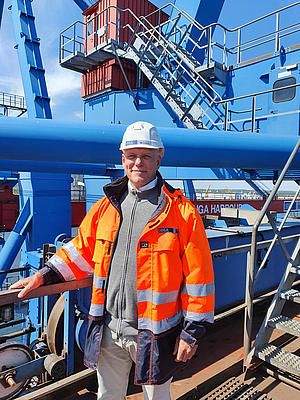
In order to keep the 1,400-t-steel structure in balance while it was jacked up, the trolley and boom had to be kept in the most outward position. Though the cranes run on rails, the gauge of the existing tracks did not match them. It was more efficient to narrow the gauge of the crane from 35 to 30.5 metres than to lay new tracks.
It was a delicate operation to move the container gantry into the right position. Delicate, but thoroughly planned, like all the steps on the way from Hamburg to Tallinn. In the project team in Hamburg 10 specialists were involved, and in Tallinn four more. “We tried to anticipate possible obstacles and problems”, recalls Segerkrantz. “For example, the inspection with the agency was started months before the cranes were rebuilt. That saved us a lot of time, because only overload testing and visual inspection was needed.”
Nevertheless, it was "learning by doing," like Dmitri calls it laconically. TK's chief engineer Segerkrantz grins a little and adds, "Improvising is part of our job. We did it the hard way, but in the end, it got us there."
In the Nordic winter, the road became even harder and iced over completely. The waves of the Baltic Sea beat against the quay walls in the harbour of Muuga, freezing up to a metre high. The work became really unpleasant, but it had to be done.
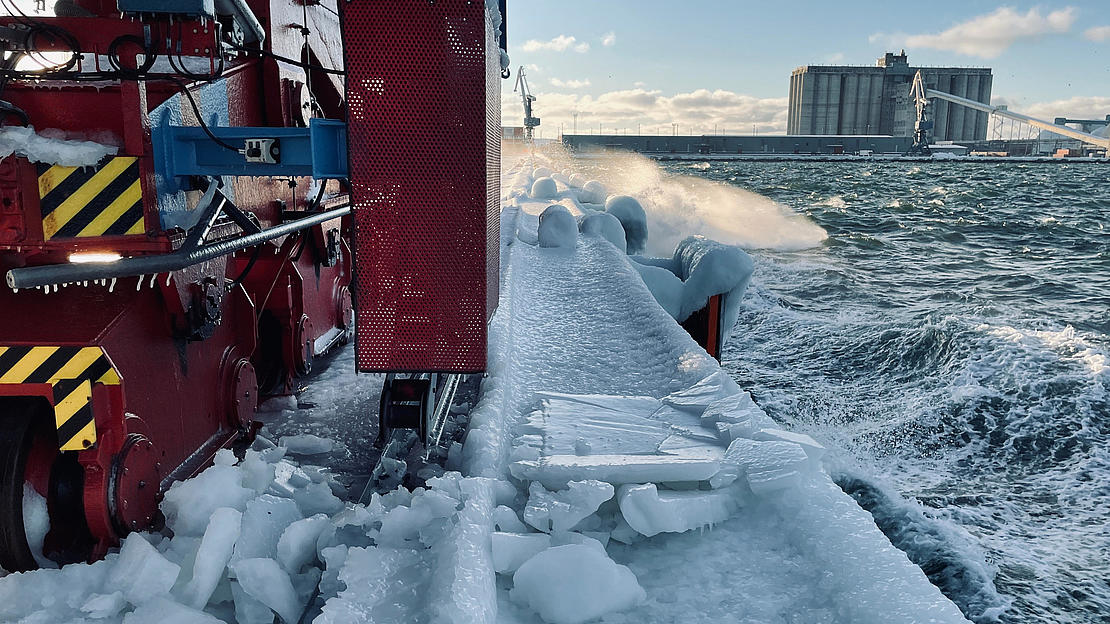
Finally, the long-awaited Estonian crane inspector came personally to visit the gantry cranes. The kind of equipment that came from Hamburg had not been used in Estonia before, so it had to go through an official inspection. Every detail was tested, and the first run-through still revealed a few errors. But the A-team from HHLA TK persevered, and was finally able to proudly announce that official permission had been granted! The two cranes, the first of their kind, entered the Estonian crane register.
The cranes were named Alpha and Bravo by the Estonian Minister of Economic Affairs and Communications, Taavi Aas, and HHLA’s Chairwoman of the Executive Board, Angela Titzrath, in an official christening ceremony on 31 May 2022. "The names are the first letters in the Radiotelephony Spelling Alphabet. Therefore, they symbolically underline the beginning of the journey of containers that are either arriving in Estonia or moving on from here to the world," said Riia Sillave, CEO of HHLA TK Estonia, during the ceremony.
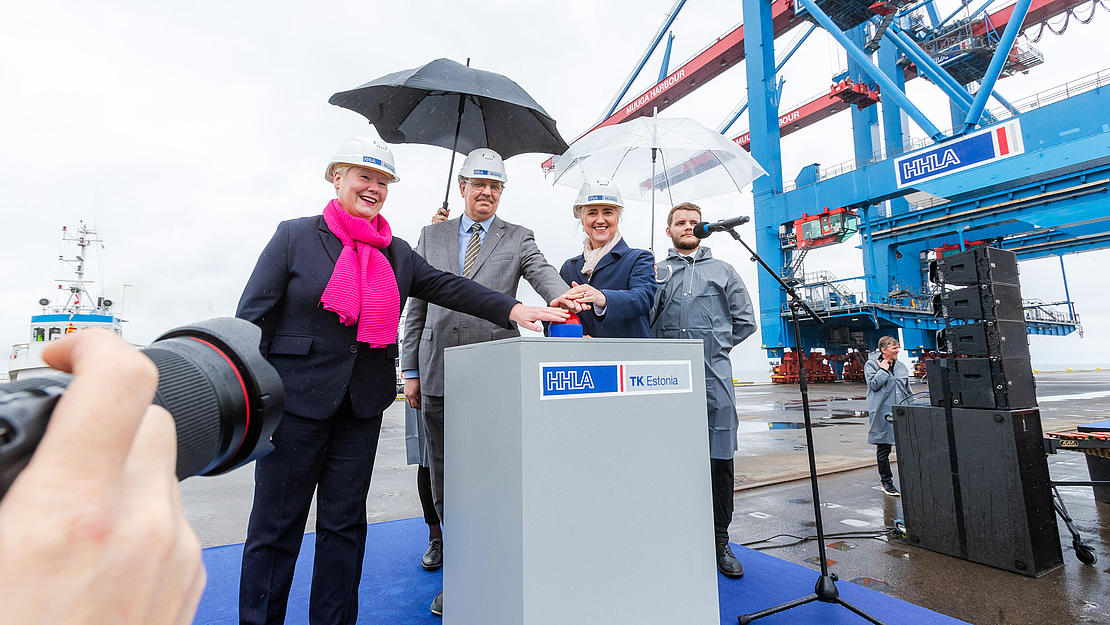
This would not have been possible without the A-team. Following the ceremony, Chief Engineer Segerkrantz and technology-loving Bashkov stood proudly on top of the Alpha crane, looking out over the large terminal area to the Baltic Sea. Rain clouds were gathering, but Bashkow smiled: "I just love these huge cranes," he said. "And I like the opportunity to always tackle new things together," added Segerkrantz. "Our whole team is really extraordinary!"
Published 06/2022